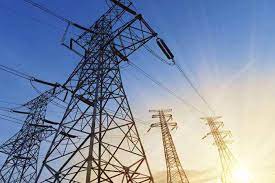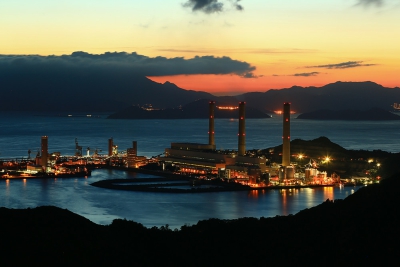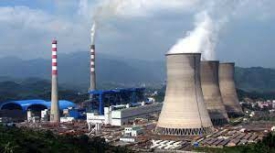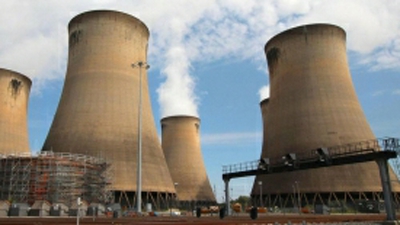
China
China "restricts power supply", various industries are hit

Since the beginning of summer, many provinces in China have entered into a "power shortage", especially in Guangdong, Zhejiang, Jiangsu, Hunan and Yunnan provinces, the most serious.
Yunnan Province has curtailed power consumption in the electrolytic aluminum industry-Yunnan Shenhuo estimates that its annual production capacity will be reduced by more than 11% due to the power curtailment; Yunlu Aluminum also disclosed that its production has been reduced by more than 24% due to the power curtailment.
Jiangsu Province has also targeted high-energy-consuming industries and conducted energy-saving monitoring of companies with a comprehensive energy consumption of more than 50,000 tons, involving 323 companies and 29 "two highs" projects.

The Hunan Provincial Electric Power Company warned on September 22 that the power gap might exceed 30%. At the same time, all cities in Guangdong province have launched an orderly power utilization plan, and many industrial enterprises in many places have "opened three and stopped four" or even "opened two and stopped five" staggered peak power consumption.
At the end of last year, China experienced a round of "electricity shortage", but it has not yet affected the electricity consumption of residents like this round of electricity shortage. The BBC has sorted out the possible reasons behind it: the relative shortage of supply caused by the excessively fast growth of electricity demand, and the price of electricity coal. Rising, and affected by the "dual control policy."
Sudden increase in production capacity

Most of the current outages were concentrated in manufacturing provinces such as Jiangsu, Zhejiang and Guangdong.
Under the continuing impact of the epidemic, China, as one of the few economies in the world that still started production under the impact, has attracted a large number of international orders. In addition, Southeast Asia continues to be affected by the mutant virus, and international orders have to be transferred to China.
The data also confirms the hotness of the manufacturing industry-data released by the General Administration of Customs of China shows that in US dollars, the growth rate of exports accelerated to 25.6% year-on-year, the growth rate of imports accelerated to 33.1%, and the trade surplus further expanded to 58.34 billion U.S. dollars. , Are higher than market expectations.
Cumulatively speaking, in the first August of this year, China's exports increased by 33.7% year-on-year and 30.3% year-on-year, with a trade surplus of US$362.49 billion, an increase of 28.9% year-on-year.
Behind these data is the continuous extension of working hours and the substantial increase in electricity consumption. Moreover, China has a saying that "golden nine silver ten", September and October are often the peak period of orders.
High coal prices

Faced with the strong demand for electricity, the supply of electricity cannot keep up.
First of all, China's hydropower supply is unfavorable this year. According to the National Bureau of Statistics, the absolute hydropower generation is 761.7 billion kilowatt-hours, a year-on-year decrease of 1%.
The thermal power generation cannot be increased either. In August, China’s absolute thermal power generation was 516.7 billion kilowatt-hours, an increase of 0.3% year-on-year, and the growth rate was 12.4 percentage points lower than that in July.
The growth of thermal power has almost stagnated due to the rapid rise in coal prices.

According to data released by the China Electricity Council, the week from September 16 to September 23 has reached 1,086 yuan/ton, a year-on-year increase of nearly double and an increase of 56.26% from the beginning of the year.
Chinese media Caixin quoted a Guangdong No. 1 coal power plant as saying that the current standard coal price of the plant is about 1,400 yuan per ton. If converted into cost, the fuel cost is at least 0.448 yuan per kilowatt-hour, plus other factors such as financial costs, "it is already a loss. Operations". The local benchmark coal-fired electricity price is 0.463 yuan per kilowatt-hour.
The important reason behind it is that China’s electricity prices are still under control, and electricity prices cannot rise with rising demand. However, the high cost of coal prices makes thermal power companies lack the incentive to expand power generation.
"The thermal power plant once lost more than a dime when it generated electricity. It has been lost for more than a month. Under this background, how can the power plant have the power to increase the power supply? They are not generating full capacity.

This situation has dealt a severe blow to the manufacturing industry, and many factories have been labeled as low-profit and high-energy-consumption labels, thereby restricting power supply. The production capacity of many small factories, such as those in the Northeast and Zhejiang, has been drastically reduced. On the other hand, Shenzhen has not been greatly affected. To a large extent, it is the successful transformation of Shenzhen and the low proportion of energy-intensive industries. It is not difficult to see that China is forcing the transformation of small factories to a certain extent.
"I think that in the future, electricity prices should be reformed based on market supply costs, but not because of short-term issues to raise electricity prices, but if it does not rise, who will bear the cost of carbon neutrality, and how can it be able to curb high upstream consumption? The role of energy industry?"
 Call At :
Call At :
Fax : 0591-87752239
 Email Us :
Email Us :
Email : sales3@fjhongbamboo.com
Mobile /Wechat /Whatsapp /Skype : +86-13075880524
 Address :
Address :
Room 1305 , C2 Building, Wanda plaza Cangshan , Fuzhou City, Fujian, China (350007)
© Copyright: 2024 FUJIAN HONG BAMBOO TRADING CO.,LTD All Rights Reserved.

IPv6 network supported